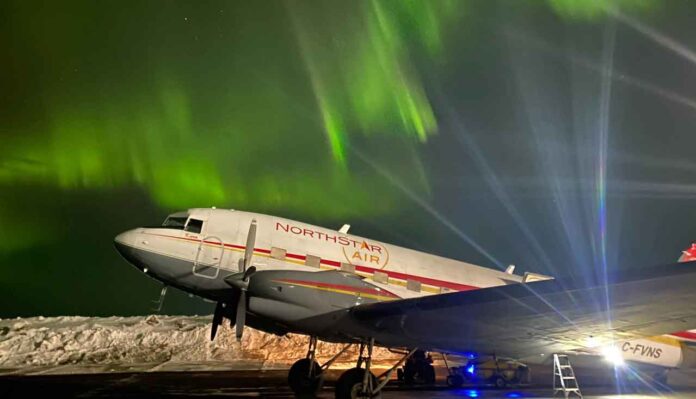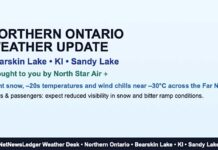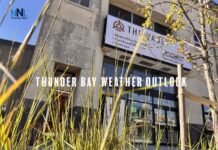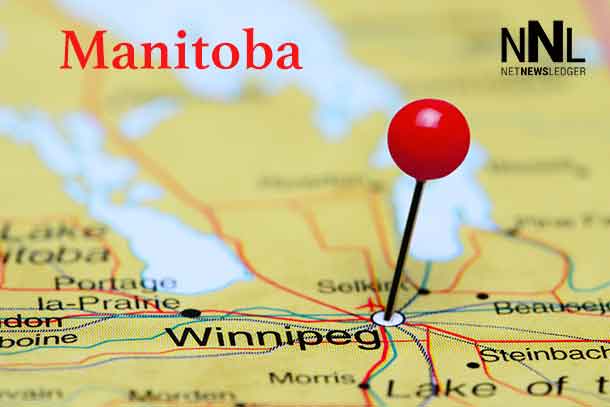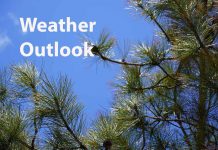This weekend, the communities of Kitchenuhmaykoosib Inninuwug (KI), Bearskin Lake First Nation, Sachigo Lake First Nation, Kasabonika First Nation, and Sandy Lake First Nation will experience chilly conditions with variable cloudiness.
Data observed from Big Trout Lake Airport early this morning indicates mainly cloudy skies with mild winds and the risk of light flurries.
Today’s Weather Overview
Current Conditions
As of 5:34 AM CDT at Big Trout Lake Airport, it is cloudy with a temperature of -3.0°C. The air pressure is steady at 101.6 kPa. Humidity is high at 90%, and the dew point is -4.4°C. North-northwest winds are gentle at 8 km/h, contributing to a wind chill of -6, with visibility up to 16 km.
Expected Conditions
Saturday, April 13: The day will remain mainly cloudy with a 30% chance of early morning flurries and a risk of freezing drizzle. Winds will remain light at up to 15 km/h. The high will be a cool 4°C, but the wind chill could feel as low as -8 this morning. The UV index is moderate at 3. Tonight, skies will turn partly cloudy with a low of -7°C and a wind chill reaching -12 overnight.
Sunday, April 14: Expect skies to clear with continuous light winds. Temperatures will rise slightly to a high of 5°C, though the morning may still feel as chilly as -11. The UV index will improve to 4. The night will see cloudy periods and a steady low of -7°C.
Monday, April 15: A mix of sun and cloud will prevail, with highs edging up to 6°C. Nighttime conditions will include cloudy periods with temperatures dipping back to -7°C.
Tuesday, April 16: Similar conditions will continue, with a mix of sun and cloud and a high of 7°C. The night will bring cloudy skies and a 30% chance of rain showers or flurries, with a low of -3°C.
Wardrobe Recommendations
For the weekend, it’s essential to dress warmly with multiple layers, including thermal wear, insulated jackets, and windproof outer garments to handle the cold wind chills. Waterproof footwear and hats are also advisable, especially in the morning and late evening when temperatures drop significantly.
Weather Trivia
Did you know? The Northern Ontario First Nations communities are located in a region known for its subarctic climate, where temperature fluctuations are common and winters can extend well into what is considered spring in more southern areas.

